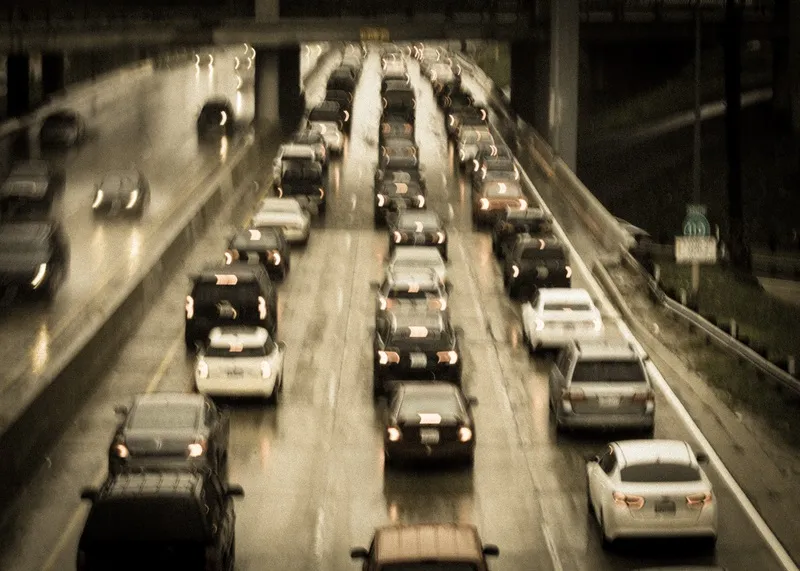
In a post on Intertraffic's website, Ford's project lead Jonathan Scott says the company decided to address policy intentions when London's Mayor Sadiq Khan issued his Transport Strategy in 2017.
“That prompted us to ask: ‘how do you get there?’” he says. “If you’re forever reacting to accidents you will never achieve Vision Zero, and the safe systems approach requires infrastructure that is tolerant of human imperfections. By combining historic accident data and real-time vehicle data to predict where accidents will happen, we can allow cities to progress from reactive to proactive management of road safety.”
Light commercial vehicle (LCV) use in the UK capital is expected to grow 22% by 2031. Ford deployed 160 transit LCVs to collect 500 million data points covering a million miles of recorded driving.
“Using a plug-in device to collect a host of rich data, 160 vehicles gave us real insight into how those vehicles were used across London,” he continues. “We needed to work out the optimum data rate. Monitoring rapid steering manoeuvres requires second-by-second data, but to monitor whether headlights are on, it can be once every five seconds.”
During the two-year study, the team collected additional data from a private-use Ford Fiesta fleet and worked with its US-based global data insight and analytics team to turn vehicle records into insights.
The US automaker set out to predict accidents before they occur through historic accident data and identifying risky driver behaviour at those locations using metrics such as speed, hazard-light usage and braking patterns.
Scott reveals that a smart algorithm then looked across London to see where those behaviours are repeated without necessarily leading to accidents.
“It’s based around the near-miss protocol in modern health and safety. We can predict where the next incident might occur so that cities can investigate and identify future infrastructure changes to reduce those events,” he adds.
Additionally, Ford ‘meshed’ together real-world fleet operations data with speed and traffic flow information at different times of the day so that fleets could weigh up the benefits of re-timing “versus the logistical impact of deliveries arriving too early”.
The study suggests that a fleet could save 60 hours per week by setting out two hours earlier.
“Using granular data, we could boil that down depot-by-depot or vehicle-by-vehicle,” Scott ponders. “It might be worth re-timing not the whole fleet, but just a few individual routes.”
As part of the study, Ford used real-world fleet movements and downtime data to show where electric vehicle (EV) charging infrastructure could be optimally placed.
“There are more than 500 charge points in London, but we found that most vehicles didn’t stop for long enough or close enough to use them,” Scott explains. “Then it dawned on us that we could flip this round by positioning charge-points based on actual fleet operations.”
According to Ford, only 1% of tracked vehicles stopped within 100m of existing charge points, but as few as 20 new rapid charge points installed at strategic locations could improve EV viability across the whole of London.
In another area of the project, Ford compared journey times from its fleet with multimodal application programming interface data and transit timetables to show that 20% of driven journeys would be quicker by public transport, cycling or walking. A journey-time comparison could allow authorities to target public transport investment on routes where transit times compare less favourably with driving, the company adds.
Scott reveals that the company set out to investigate the so-called 'summer holiday effect', an assumption that roads will be less congested during academic recess.
Ford compared traffic flow across London on a normal week with a week in the holidays to show that while a lack of school-run traffic was shown to improve travel times in most areas, congestion on the A13 and A406 North Circular around London increased.
The company has now extended its data analysis to the Spanish city of Valencia and Cologne in Germany. It is also working with civil engineers at Traffic Watch UK to analyse driver behaviour at eight potential London hotspots and to explore infrastructure adaptations that could mitigate risky driving patterns.
“The next step is understanding how authorities can consume these insights. We have to understand existing ecosystems in order to build a tool that’s tailored to real-world use of this data,” Scott says.
Looking ahead, Ford advocates pooling data from vehicles, public transport and infrastructure into an open, cloud-based platform called the Transportation Mobility Cloud (TMC). The solution is expected to connect service providers, cars, fleets, pedestrians, cyclists and transit systems while also enabling solutions such as zero-emissions geofencing and dynamic road management based on real-time traffic updates.
The company is now inviting competitors to participate in the development of the TMC.
“We’re in a transitional period and showing the benefits of our tools will be critical to their success,” he insists. “If we can demonstrate that, by sharing your data, you are improving road safety for the greater good, then it’s a win-win. Ford benefits, the city benefits and users of our vehicles benefit.”










